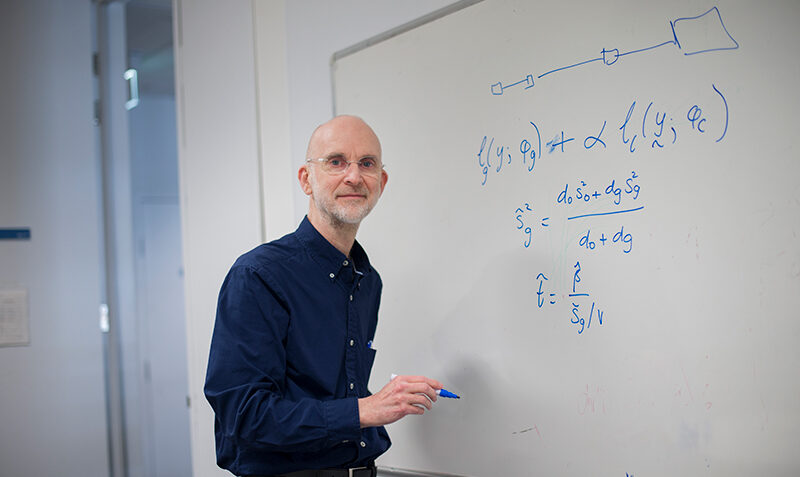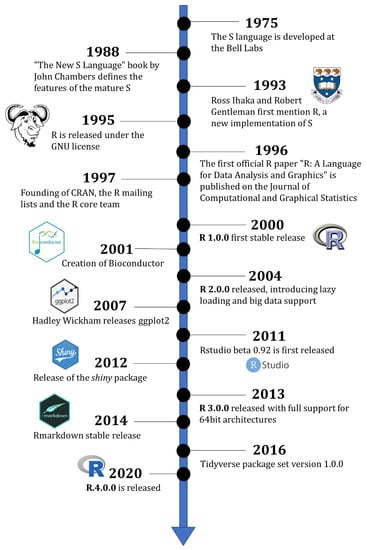How Bioinformatics Tutor can Save You Time, Stress, and Money.
How Bioinformatics Tutor can Save You Time, Stress, and Money.
Blog Article
Bioinformatics Tutor - Questions
Table of ContentsThe Buzz on Bioinformatics TutorThe smart Trick of Bioinformatics Tutor That Nobody is Talking AboutNot known Details About Bioinformatics Tutor The Only Guide for Bioinformatics TutorThe smart Trick of Bioinformatics Tutor That Nobody is Talking About
Of the total individuals entailed in the training, 80% were pupils from public college institutions, while the staying 20% came from private institutions. To receive a certificate of involvement, students were needed to attend at least 90% of the overall training hours. As a result of this demand, a remarkable 95% of the participants effectively gotten their certifications, having not only fulfilled the minimum attendance criteria yet likewise finished all assigned tasks throughout the training.
During the elevation of the COVID-19 pandemic, specifically in between June and August 2020, the project group was tasked with organizing specialized training in bioinformatics. This training was especially targeted at trainees from the study team Nucleus for Research study in Applied Computer at the Federal College of Pará (UFRA) The adaptation to remote discovering platforms as a result of the pandemic created an opportunity to explore new training methodologies and digital devices that improved both reach and efficiency.
This course was made to supply an available yet extensive summary of Artificial Knowledge methods, especially as used in bioinformatics (Bioinformatics Tutor). This online style made it possible for engagement from trainees across Brazil, many of whom may not have had the chance to participate in in-person sessions.
Excitement About Bioinformatics Tutor
A notable function of this training course was its emphasis on hands-on discovering. Roughly 50% of the complete training hours were committed to useful activities where pupils built smart versions and applications in a series of scientific domain names, consisting of genes, molecular biology, and ecological data analysis. Extensively used devices and structures such as Spyder, Google Colab, Jupyter Notebooks, and Orange were incorporated into the coursework. These platforms made it possible for pupils to take part in real-time information control, version training, and formula experimentation.
The training course brought in 80 individuals in overall. Sixty of them were connected with different greater education organizations in the state of Pará, while the staying twenty came from institutions located in five various other Brazilian states. This wide geographical representation highlighted the national rate of interest in bioinformatics and the growing demand for specialized abilities in this location. By presenting Expert system in a appropriate and useful context, the effort offered to bridge the void in between theory and real-world application, providing students with a strong structure for future research or work in the field.
The training initiative developed part of a wider academic outreach initiative referred to as the Bioinformatics on the Roadway job. This project has, for many years, introduced lots of students to the world of bioinformatics and computational biology. The occasions held under this umbrella initiative have happened across numerous read here regions and years, as summarized in Table 1 (Listing of events, places, years, and complete numbers of trainees and teachers)
Numerous of these teams, initially brought together by their engagement in training occasions, have actually since gone on to produce independent scientific study in cooperation with neighborhood scholastic establishments. The training not just fostered scientific thinking within the context of bioinformatics but also sparked collective connections that prolonged beyond the training environment.
The Ultimate Guide To Bioinformatics Tutor
The task itself was conceived and arranged by MB and RR, that managed the preparation and implementation of each action. Lectures were provided by a multidisciplinary group containing MB, FA, EF, KP, JS, DM, click here now SN, LP, LG, IH, rr, and air conditioner. The same group, omitting IH and RR, also acted as tutors for the functional training components. Financing for the project was supplied through the give 88887.200562/ 2018-00 from CAPES. The authors extend their gratitude to everybody that added to the understanding of this task, whether directly or indirectly, since its creation.
The Federal College of Pará's Workplace of Research (PROPESP/UFPA) additionally supplied monetary support, specifically for the production of the final manuscript. The writers state no industrial or financial disputes of passion that could have influenced the study. In addition, all viewpoints and analyses revealed in this short article are only those of the authors and do not necessarily show those of their particular institutions, the author, editors, or reviewers associated with the magazine procedure.

Getting The Bioinformatics Tutor To Work
From an instructional point of view, the training approach used in the training was intentionally interactive. Courses were performed in a fashion that urged pupil engagement and conversation, exceeding rote memorization to explore how concepts are established, applied in life, weblink and evaluated in academic setups. The educational ideology concentrated on nurturing both solid and battling pupils, supplying personalized support, and structure confidence with continual mentorship and perseverance.

Each team, including roughly 36 participants, was supported by three advisors-- many of whom were postdoctoral researchers with specialized know-how. These coaches not only helped design the team jobs however also facilitated their implementation, making certain that each research study question was both properly challenging and pertinent. The goal was to provide a naturally sensible context that participants can check out through flexible purposes and accessibility to curated datasets.
For extra understandings into the methodology and end results of this project-based learning approach, visitors are directed to S1 Text, which consists of comprehensive summaries of the instructional framework, evaluation methods, and project styles used in the training sessions.
Not known Facts About Bioinformatics Tutor
Of the total amount participants included in the training, 80% were pupils from public greater education and learning organizations, while the staying 20% came from exclusive establishments. To qualify for a certificate of engagement, pupils were required to attend at least 90% of the overall training hours. Significantly, beyond the trainees who signed up in the training sessions, 7 seasoned instructors took part in supplying the courses, while three specialized study teachers worked with the overall training process. Roughly 50% of the overall training hours were devoted to useful activities where trainees developed smart designs and applications in a variety of scientific domain names, consisting of genes, molecular biology, and ecological information evaluation. The training not just cultivated scientific reasoning within the context of bioinformatics yet additionally triggered joint partnerships that expanded past the training setting.
Report this page